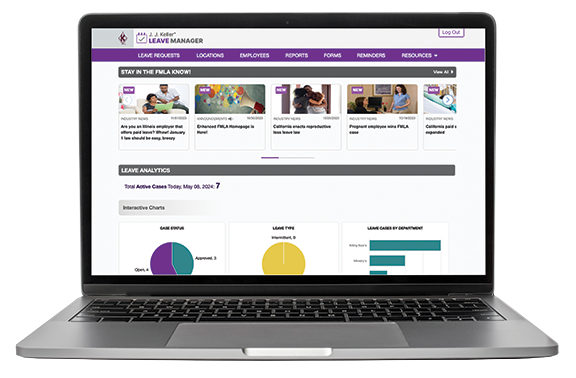Key to remember:
Employees asking about FMLA leave are protected
Employers can’t fire employees for simply asking
Antonio had two daughters, one of whom had a disability. He was in his fourth year of teaching when he began missing work due to his conditions and to care for one or both daughters. He wondered about leave under the federal Family and Medical Leave Act (FMLA).
On January 26, Antonio emailed Jasmine, Head of School, to tell her, “I will request leave under FMLA. If you can assist me in any way with the process, it would be appreciated.”
That same day, Antonio also emailed Amanda, Director of Special Projects, saying, “I would like to request FMLA leave as well as any information on the process and requirements.” Both Jasmine and Amanda connected Antonio with Valerie, the HR director.
That evening, Jasmine also contacted Valerie for “support” and to get more details on Antonio’s situation. Two days later, on January 28, Valerie told Jasmine that she tried to connect with Antonio to explain that he “…cannot request FMLA leave, but it is a period that is applied for and approved in conjunction with a medical need by a certified doctor.” The two decided to fire Antonio.
On February 1, Jasmine and Antonio agreed to a phone call the next day. That same day, Antonio emailed Valerie to ask if there was “any additional information that [she] could share regarding the FMLA request and process” because he had “yet to receive any information.” The employer asked Antonio for an FMLA certification and an expected return date for the certification.
The next morning, Antonio responded and confirmed that he would consult with his doctor, but didn’t say when he would return the requested form.
Later that day, during the scheduled call, Jasmine fired Antonio, stating that she “needed someone who was going to be available to be at work.”
Antonio sued, claiming the employer violated his FMLA rights.
In court, the employer argued that Antionio failed to “explain the reasons for the needed leave” so it could “determine whether the leave qualifies under the Act.” It also asserted that he had missed so much work that he sensed he would be fired and mentioned the FMLA to delay the inevitable, yet Antonio had not been disciplined.
Notice of the need for leave
In court, Antonio argued that he gave notice of his intent and entitlement to use FMLA leave. The court agreed that verbal notice may be enough. It also found that the employer might have interfered with Antonio’s ability to find out about his rights or to even give notice.
The court pointed out that employers may not interfere with an employee’s ability to exercise, or attempt to exercise, FMLA rights. Simply asking about or requesting leave is an FMLA-protected right. Antonio had expressly asked for information about the FMLA process three separate times.
The court also found that, while the employer said they didn’t have enough information, why else would it request that a doctor certify Antonio’s medical condition if it had no basis for believing he could qualify for FMLA leave? The FMLA doesn’t allow employers to prevent employees from giving notice by firing them and then use their failure to give notice as a defense.
Time to get a certification
Antonio also argued that the employer didn’t give him enough time to get the certification before it fired him.
The court agreed, as the company fired Antonio only days after his FMLA leave requests, before answering any of his questions about the FMLA.
Given all the facts, the court allowed the case to proceed to trial, denying the employer’s request to have the case closed.
Futch v. Freedom Preparatory Academy, Inc., Western District of Tennessee, No. 2:23-cv-02798, June 12, 2025
After requesting FMLA leave to care for his daughters and manage his own health, a teacher was fired just days later—raising legal questions about employer interference and employee rights under the FMLA.
This article was written by Darlene M. Clabault, SHRM-CP, PHR, CLMS, of J. J. Keller & Associates, Inc. The content of these news items, in whole or in part, MAY NOT be copied into any other uses without consulting the originator of the content.

The J. J. Keller LEAVE MANAGER service is your business resource for tracking employee leave and ensuring compliance with the latest Federal and State FMLA and leave requirements.